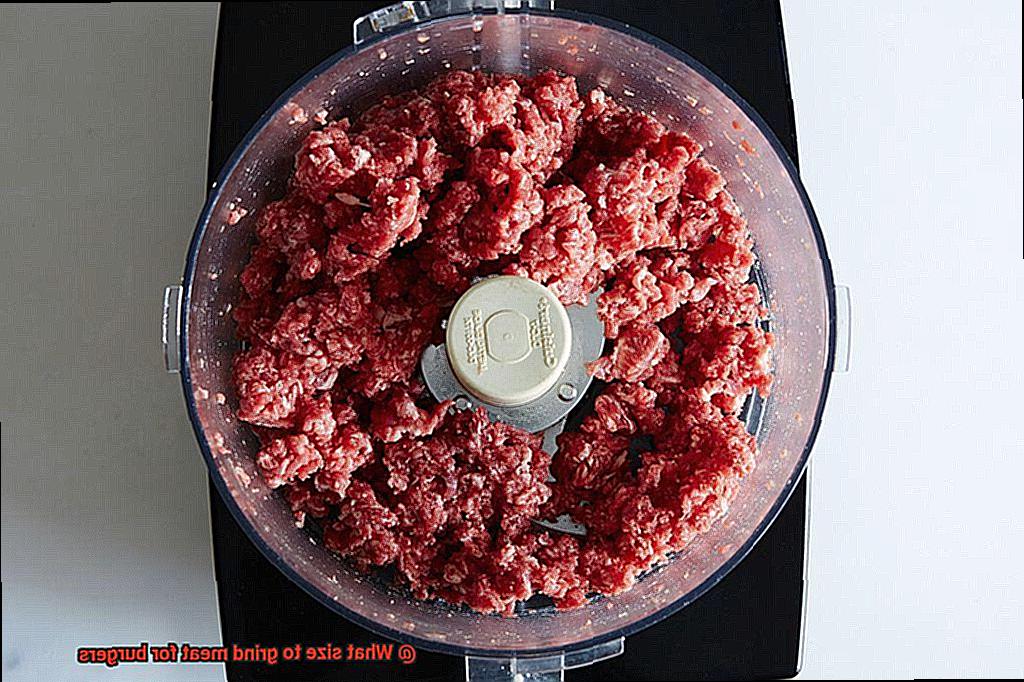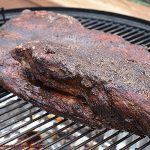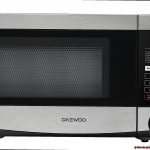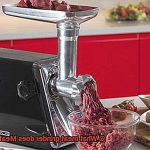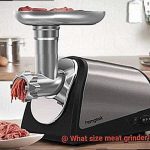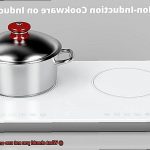Do you dream of biting into a juicy, flavorful burger that leaves you wanting more? Well, it’s time to get serious about your meat grind. The size of your grind can make or break the quality of your burgers. It affects everything from texture to taste, and it’s essential to choose the right size for the perfect patty.
But how do you know what size to use? Should you go for a coarse or fine grind? And what about the fat content? These are all important factors that can impact your burger’s overall quality.
In this article, we’ll explore the different sizes of meat grinds and how they can affect your burgers’ taste and texture. We’ll also dive into the role of fat content and how it impacts your burger. Whether you’re a seasoned grill master or a beginner, we’ve got all the valuable knowledge and insights you need to take your burgers to the next level.
So get ready to elevate your burger game and impress everyone at your next backyard BBQ with perfectly crafted patties. Let’s dive into the art of meat grinding for burgers.
Contents
What is the Difference between Coarse, Medium and Fine Grinds?
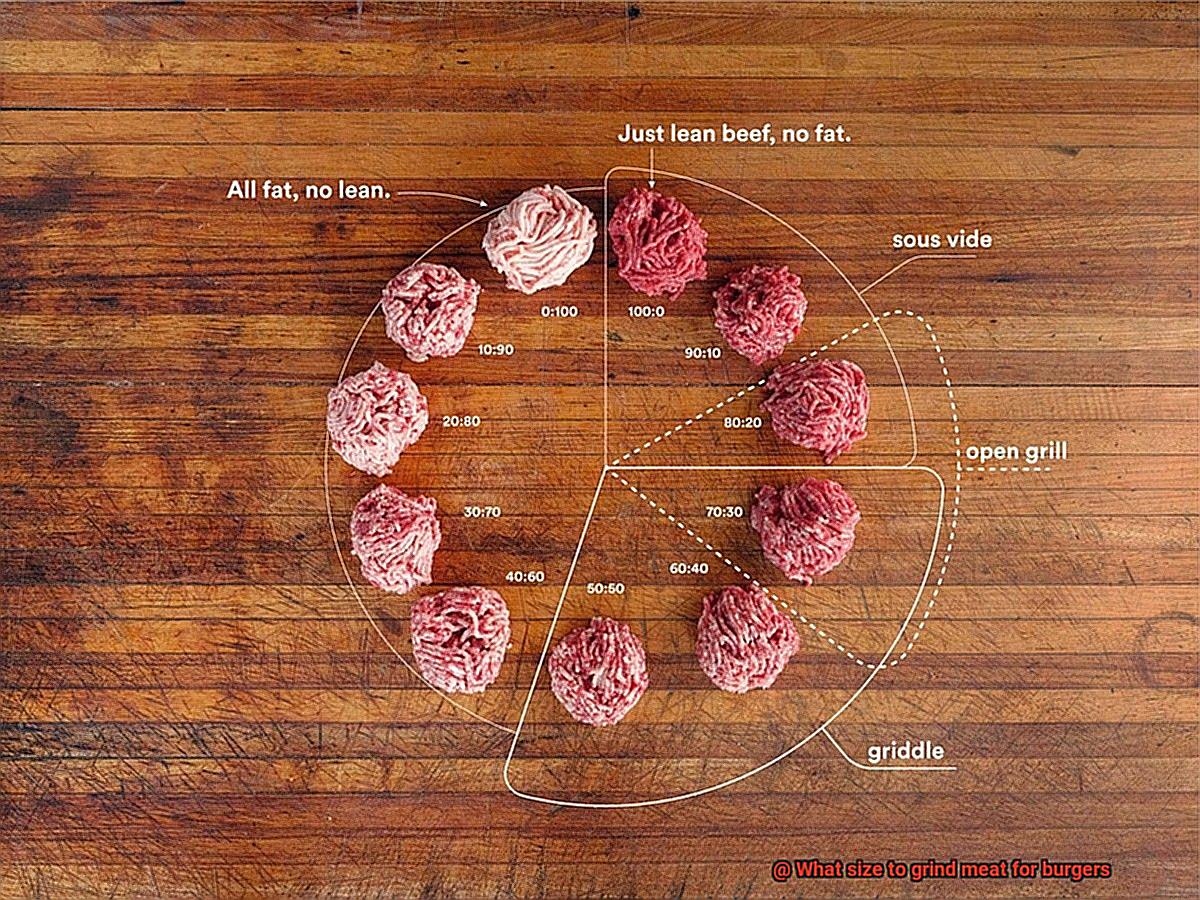
There are three main categories of grinds: coarse, medium, and fine. Let’s explore the differences between them.
Coarse grinds are ideal for sausages and meat dishes that require a chunky texture. The meat is ground through a grinder with larger holes, resulting in visible pieces of meat in the final product. For burgers, a coarse grind can provide a rustic texture with small chunks of meat throughout. It’s perfect for those who enjoy a chewy texture.
Medium grinds are the most commonly used for burgers as they offer a good balance between texture and juiciness. The meat is ground through a grinder with smaller holes than in a coarse grind, resulting in smaller pieces that bind together well. This grind size allows burgers to hold their shape on the grill while providing enough texture and juiciness. Medium-grind meat is also ideal for making sliders or mini-burgers.
Fine grinds are used for delicacies such as pâté and terrines. The meat is ground through a grinder with very small holes, resulting in a smooth texture with no visible chunks of meat. However, when it comes to burgers, fine grinds can result in dense and compact patties that can be overcooked easily. They work best for burgers that are cooked indoors on a stovetop or griddle.
It’s crucial to note that the fat content of the meat also affects the size of the grind. Higher fat content produces juicier burgers, while lower fat content results in drier ones. Hence, it’s essential to consider factors such as cooking method and fat content when selecting your meat.
Benefits of Coarse Grind Burgers
Not only does the coarse grind add a homemade feel to your burger, but there are also several benefits to choosing this type of meat.
Texture is key in any burger, and the coarse grind patty delivers a satisfying chewiness that is missing from fine grinds. The larger pieces of meat give each bite a unique experience, with a varied texture throughout the patty. Plus, these burgers hold their shape better on the grill or in the pan, ensuring a juicy, flavorful burger without it falling apart.
Speaking of flavor, coarse grind burgers have it in spades. The larger chunks of meat allow for more surface area to come into contact with seasonings and marinades, resulting in a richer overall taste. And with less processing and manipulation to form into patties, there are fewer opportunities for added ingredients like binders or fillers to be included in the mix.
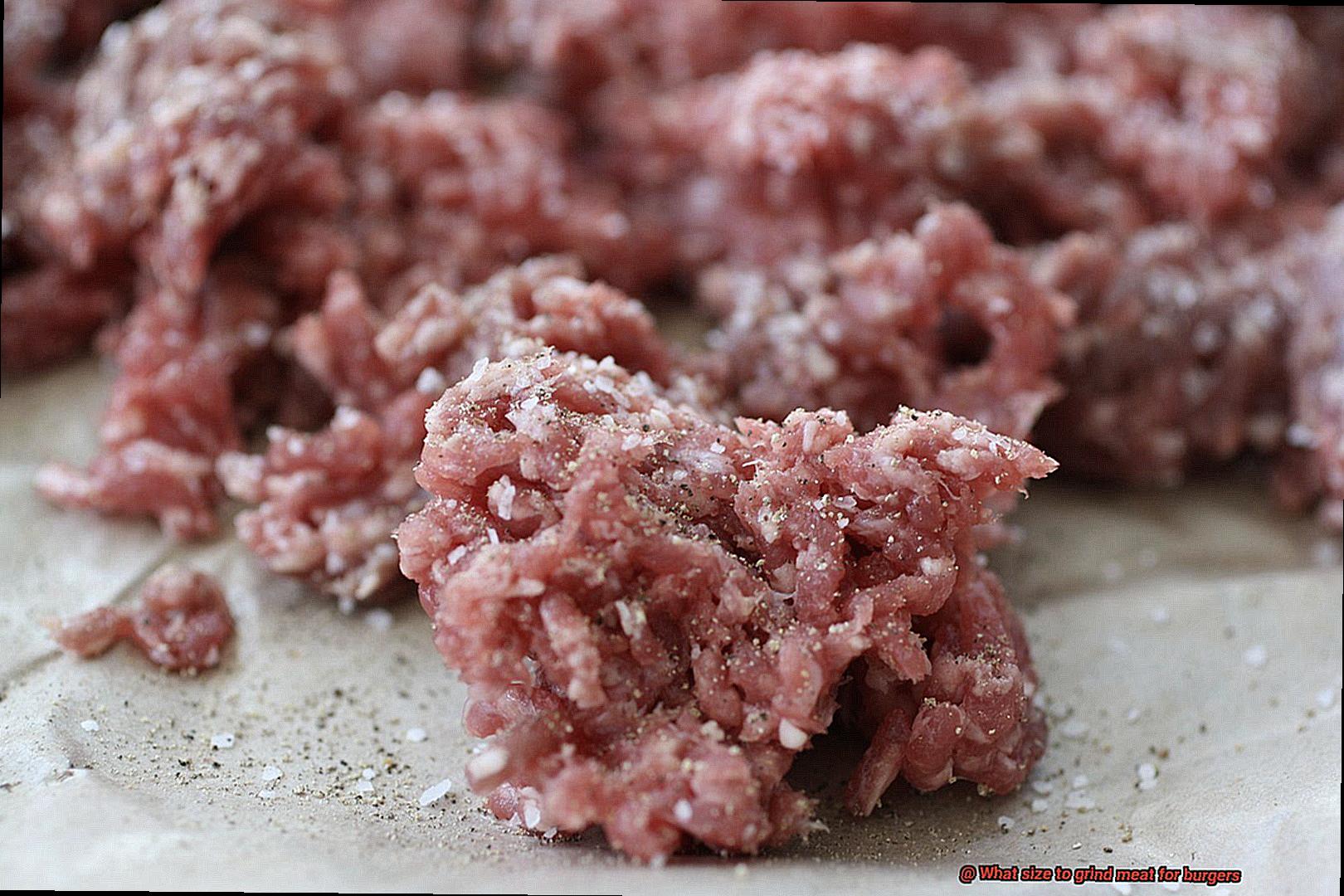
But the benefits don’t stop there – coarse grind burgers are also considered a healthier option than fine grind burgers. With fewer additives in the mix, you can enjoy your burger guilt-free.
Benefits of Medium Grind Burgers
If you’re looking for a burger that is juicy, tender, and satisfyingly chewy, then medium grind burgers are the way to go. The grind size of your meat can make or break your burger experience, and here’s why medium grind burgers are a game-changer.
Firstly, the balance of texture and tenderness in a medium grind patty is unbeatable. The beef is ground to just the right size, providing a satisfying bite without sacrificing tenderness. This means you can sink your teeth into a deliciously juicy patty without feeling like you’re eating baby food.
The versatility of medium grind burgers in cooking temperature is another significant benefit. Whether you like your burger rare, medium-rare, or well-done, a medium grind patty will cook evenly and retain its moisture throughout the cooking process. No more dry and overcooked burgers on your plate.
In addition to that, medium grind burgers are less likely to fall apart on the grill. The larger meat particles hold together better during cooking, making them less prone to breaking apart or crumbling on the grill. This means you can flip your burgers without worrying about losing any of those delicious juices inside.
Lastly, medium grind burgers are perfect for adding extra ingredients into your patties. Whether you want to mix in cheese, onions, or spices, a medium grind provides enough texture to hold these ingredients together without compromising the integrity of the burger itself. You’ll be able to enjoy a mini flavor explosion in every bite.
Benefits of Fine Grind Burgers
Let’s start with tenderness. The main benefit of using a fine grind for burgers is that it creates a more tender and juicy patty. The smaller meat particles allow for more surface area to be exposed to heat, resulting in a faster cooking time and less moisture loss. Say goodbye to dry, overcooked burgers and hello to a tender, juicy, and flavorful patty that will leave your taste buds begging for more.
But that’s not all. When meat is ground finely, the fat content is more evenly distributed throughout the patty. This means that each bite will be equally flavorful and juicy, rather than having pockets of dryness or unevenly cooked areas. With a fine grind burger, you can enjoy a consistent flavor and juiciness in every bite.
And let’s talk about texture. Fine grind burgers have a smoother texture, which can be especially appealing for those who prefer a less chunky or chewy meat. This can be particularly important for children or those with dental issues who may have difficulty chewing tougher meats. With a fine grind burger, you can enjoy a smoother texture without sacrificing any of the delicious flavor.
Factors to Consider When Choosing a Meat Grinder Size
A meat grinder is the perfect solution. But before you make a purchase, there are important factors to consider when selecting the appropriate meat grinder size.
Firstly, think about the volume of meat you plan to grind at once. If you’re only grinding for yourself or a small group, a smaller grinder may suffice. However, if you’re grinding meat in bulk for a large gathering or party, a larger grinder will save time and effort.
Secondly, consider the type of meat you’ll be grinding. Tougher meats such as beef or pork require more power to grind, so a larger grinder would be better suited. Bone-in meats, like chicken or beef bones, also require more power and thus a larger grinder.
In addition to type of meat, the size of the grinding plate affects texture. A larger plate produces coarser ground meat, ideal for burgers with a rustic texture. Conversely, a smaller plate produces finer ground meat for burgers with a smoother texture.
Finally, take into account storage space. Larger grinders may take up more storage space and be more cumbersome to use, while smaller grinders can easily be stored in cabinets or on shelves.
Tips for Grinding Meat for Burger Patties
Grinding meat for burger patties is an art form that can be mastered with a few simple tips. The texture, flavor, and juiciness of a burger can all be affected by the size of the grind. Here are five tips for grinding meat for burger patties to achieve the best results.
Choose the Right Cut of Meat
The first step in making a delicious burger is choosing the right cut of meat. The best cuts for burgers are those with a good amount of fat, such as chuck, sirloin, or brisket. These cuts will give your burgers a juicy and flavorful result. Remember to trim any excess fat before grinding to prevent the burgers from becoming greasy.
Keep Your Equipment Cold
Keeping your equipment cold is key to achieving the perfect grind. It is important to keep your meat grinder and all the attachments in the freezer for at least an hour before you start grinding. This will help keep the meat cold and prevent it from getting mushy or sticky. Cold equipment also makes it easier to grind the meat efficiently.
Cut Your Meat into Small Pieces
Before grinding your meat, make sure to cut it into small cubes or strips. This will help the grinder work more efficiently and produce a more consistent grind. It also helps prevent large chunks of meat from getting stuck in the grinder. Cutting your meat into small pieces also ensures that the fat is distributed evenly throughout the meat.
Use the Right Grinding Plate
The size of the grinding plate will determine how coarse or fine your meat will be ground. For burgers, a medium-sized grinding plate (about ¼ inch) is usually ideal. This allows for some texture and chewiness in the burger without being too tough. Using a smaller plate will result in a finer grind which can lead to a denser burger, while using a larger plate may result in a coarser grind which can lead to a tougher burger.
Don’t Overwork the Meat
Overworking the meat can lead to a tough and rubbery burger. Once you start grinding, be careful not to overwork the meat. Stop grinding as soon as it’s reached the desired texture. Grinding it too much can also lead to a loss of moisture which can result in dry burgers. It is recommended to only grind the meat once or twice at most.
Season Your Meat
Lastly, don’t forget to season your meat before forming it into patties. Salt and pepper are a must, but feel free to add other seasonings such as garlic powder or onion powder for extra flavor. Mix the seasoning into the meat gently to avoid overworking it. It is recommended to season the meat just before forming it into patties for maximum flavor.
g9cFcQozIeQ” >
Conclusion
In summary, the size of your meat grind is not to be underestimated when it comes to creating the perfect burger. Whether you’re after a rustic texture or a smoother patty, choosing the right grind can make all the difference. Coarse grinds offer a hearty bite and maintain their shape on the grill, while medium grinds strike a balance between texture and juiciness – ideal for slider-sized burgers. Fine grinds produce tender, succulent patties with an even consistency.
When selecting your grinder size, keep in mind factors such as meat volume, type of meat, plate size, and storage space. And don’t forget our top tips for grinding meat: opt for fatty cuts that will keep your burgers juicy; keep equipment chilled to avoid sticky messes; cut your meat into small pieces for consistent fat distribution; choose the right grinding plate for your desired texture; avoid overworking your meat to prevent tough burgers; and season just before shaping into patties.
By following these guidelines and experimenting with different cuts and grind sizes, you’ll be well on your way to crafting mouth-watering burgers that will have everyone at your next cookout begging for seconds.

